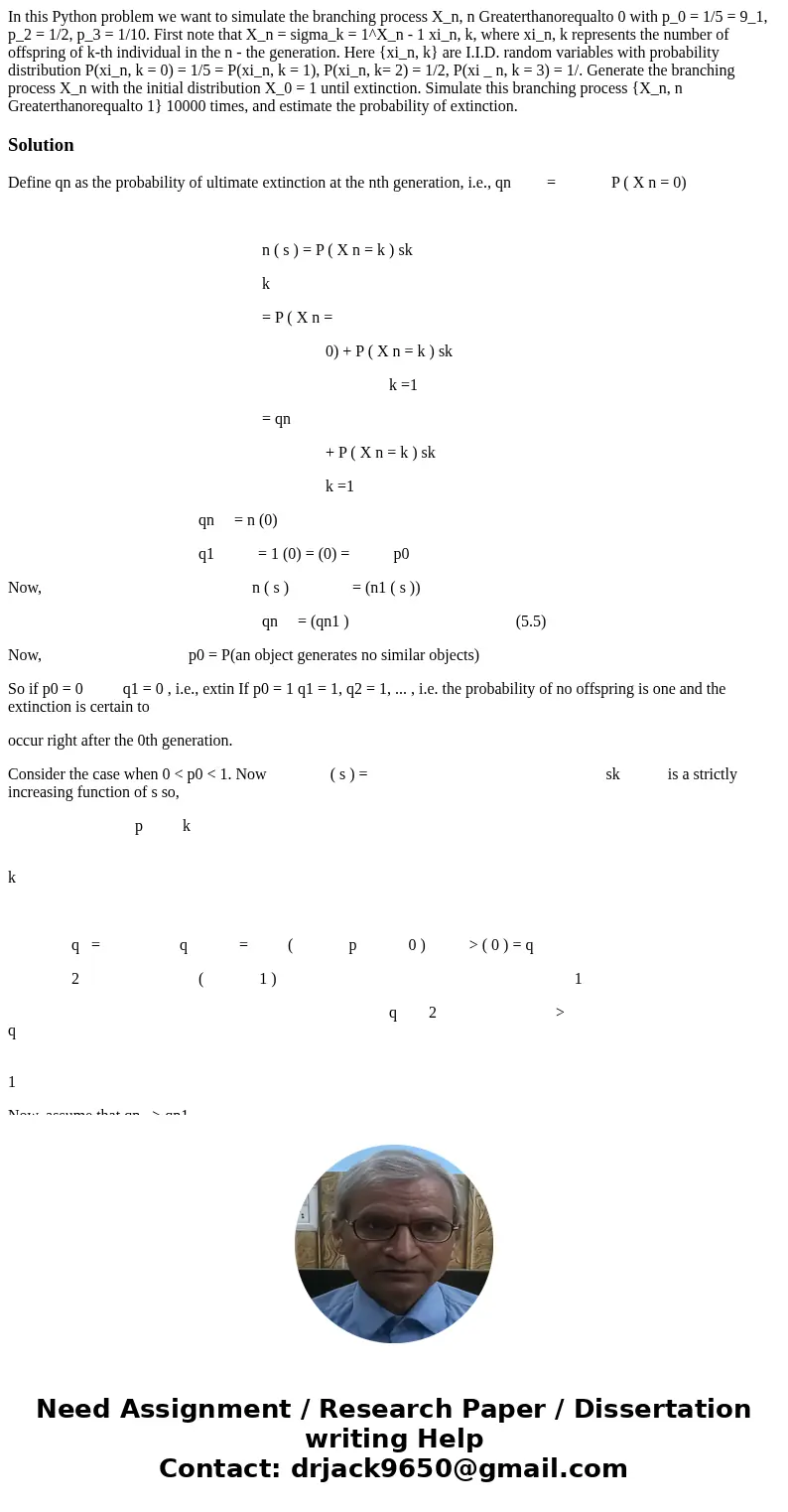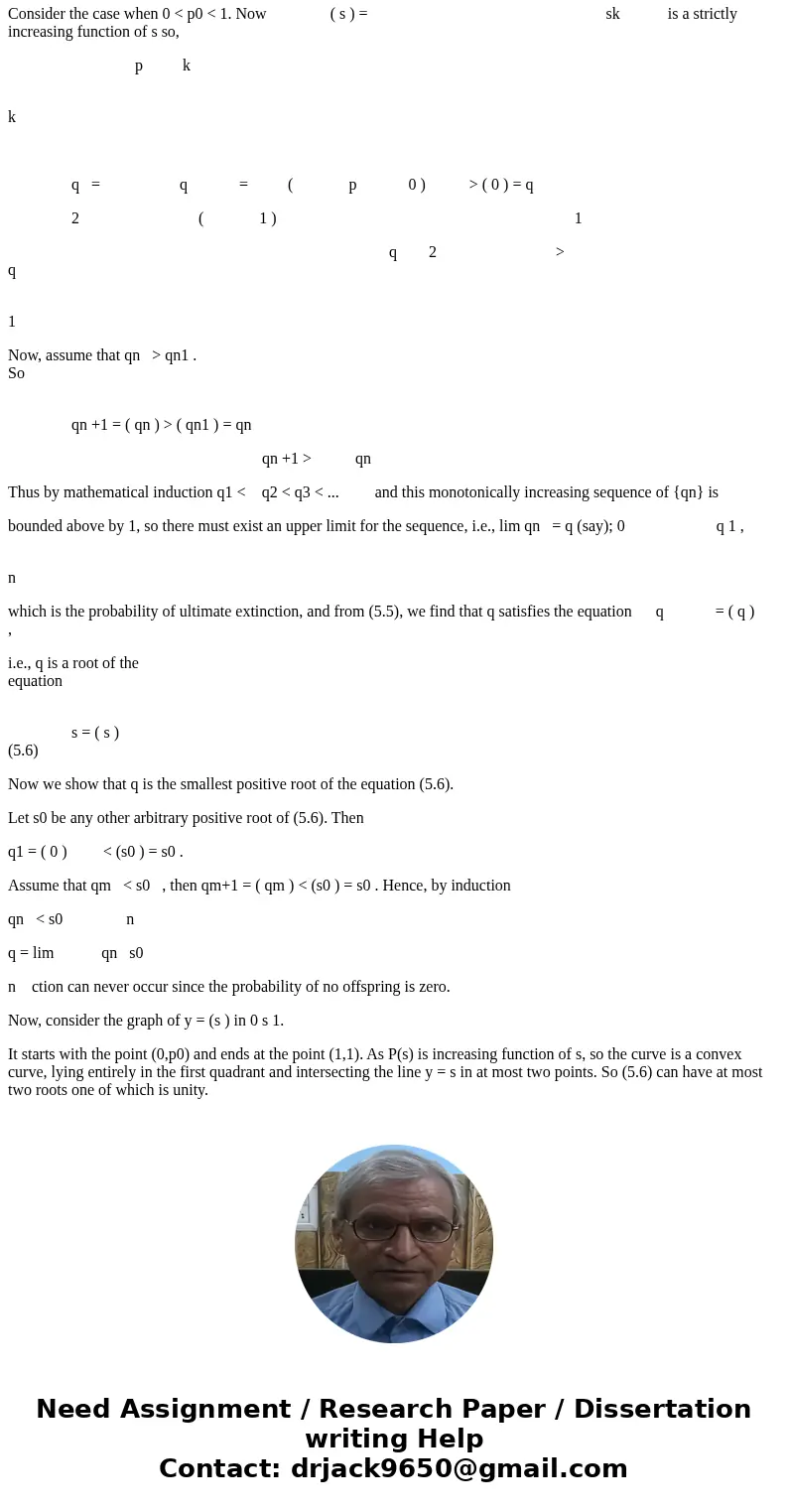In this Python problem we want to simulate the branching pro
Solution
Define qn as the probability of ultimate extinction at the nth generation, i.e., qn = P ( X n = 0)
n ( s ) = P ( X n = k ) sk
k
= P ( X n =
0) + P ( X n = k ) sk
k =1
= qn
+ P ( X n = k ) sk
k =1
qn = n (0)
q1 = 1 (0) = (0) = p0
Now, n ( s ) = (n1 ( s ))
qn = (qn1 ) (5.5)
Now, p0 = P(an object generates no similar objects)
So if p0 = 0 q1 = 0 , i.e., extin If p0 = 1 q1 = 1, q2 = 1, ... , i.e. the probability of no offspring is one and the extinction is certain to
occur right after the 0th generation.
Consider the case when 0 < p0 < 1. Now ( s ) = sk is a strictly increasing function of s so,
p k
k
q = q = ( p 0 ) > ( 0 ) = q
2 ( 1 ) 1
q 2 > q
1
Now, assume that qn > qn1 . So
qn +1 = ( qn ) > ( qn1 ) = qn
qn +1 > qn
Thus by mathematical induction q1 < q2 < q3 < ... and this monotonically increasing sequence of {qn} is
bounded above by 1, so there must exist an upper limit for the sequence, i.e., lim qn = q (say); 0 q 1 ,
n
which is the probability of ultimate extinction, and from (5.5), we find that q satisfies the equation q = ( q ) ,
i.e., q is a root of the equation
s = ( s ) (5.6)
Now we show that q is the smallest positive root of the equation (5.6).
Let s0 be any other arbitrary positive root of (5.6). Then
q1 = ( 0 ) < (s0 ) = s0 .
Assume that qm < s0 , then qm+1 = ( qm ) < (s0 ) = s0 . Hence, by induction
qn < s0 n
q = lim qn s0
n ction can never occur since the probability of no offspring is zero.
Now, consider the graph of y = (s ) in 0 s 1.
It starts with the point (0,p0) and ends at the point (1,1). As P(s) is increasing function of s, so the curve is a convex curve, lying entirely in the first quadrant and intersecting the line y = s in at most two points. So (5.6) can have at most two roots one of which is unity.


 Homework Sourse
Homework Sourse